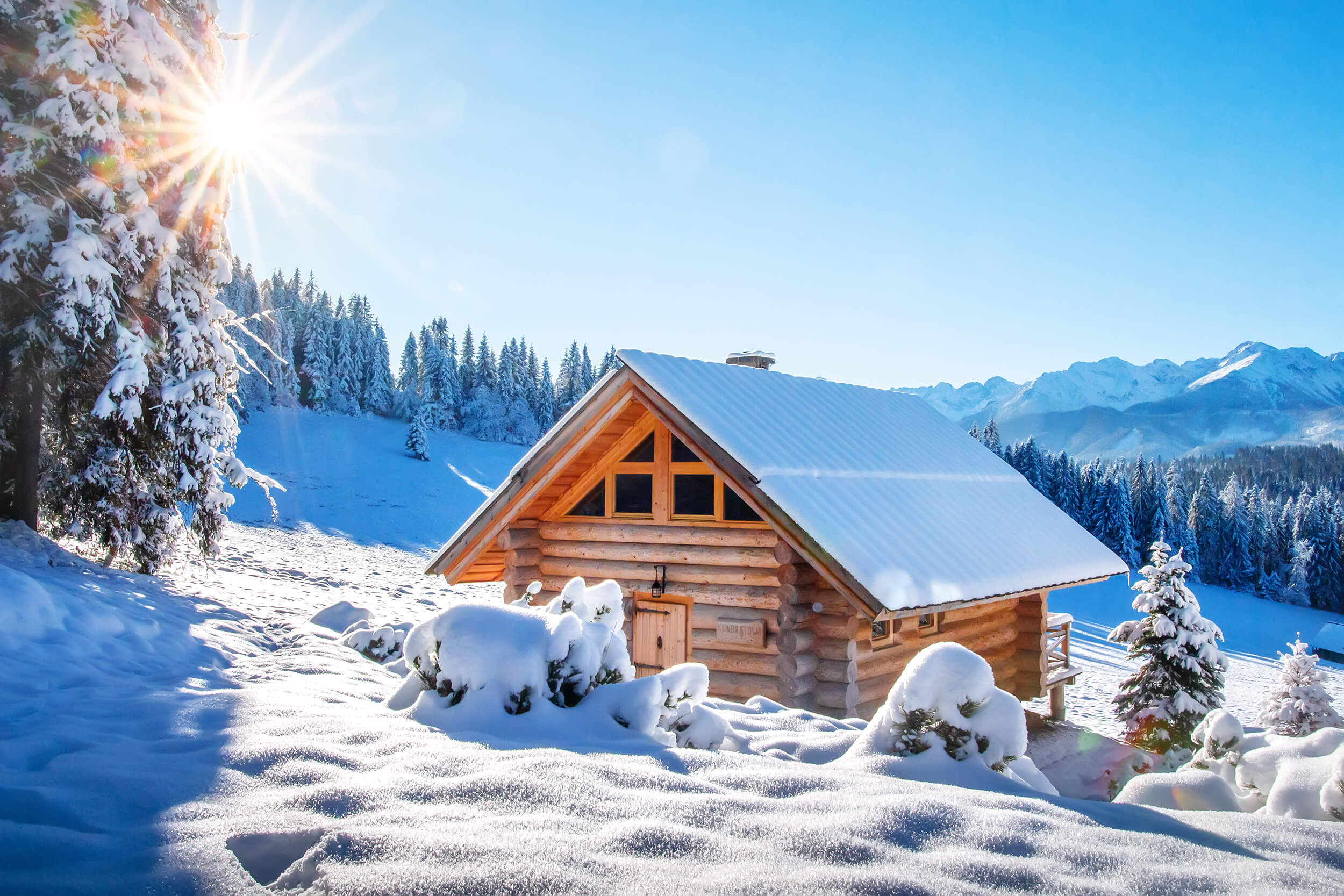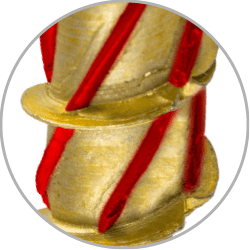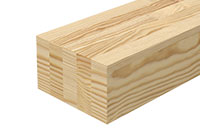Carpentry screws is the name of a broad product group that includes all fixings dedicated to wooden structures. Carpentry products are different from those offered by the market a few years back. Constant testing and technological innovations have made it possible to expand the offer, carefully dedicating individual solutions to the specific work of roofers and carpenters. Nails, once widely used, are being displaced by carpentry screws by a whole range of their unquestionable advantages.
SCREWS INSTEAD OF CARPENTRY NAILS
Wood screws have a significantly higher load-bearing capacity than the nails formerly used. In addition to this, the decidedly more convenient installation method should be emphasised. Thanks to the threading, the tightening of the parts to be joined is also improved. Stable joints definitely influence the rigidity of the structure. Importantly, in the event of faulty installation, it is much easier to make corrections by unscrewing and screwing in again.
FOR ALL TYPES OF WOOD
Carpentry screws are dedicated to joining wood and wood-based materials. Today, more and more new developments are being built using CLT, LVL, KVH and BSH timber. The use of carpentry screws in these projects will increase the economy and ergonomics of the work.
Carpentry screws are also dedicated to joining wood with materials such as plywood, chipboard, fibreboard and OSB and particle-cement board. Carpentry screws are products that require appropriate calculations. Their correct positioning and number affects the safety of the structure. When designing and selecting screws, their location, the type of load they are subjected to and the forces acting on them must be taken into account, i.e. pulling the head through the fastened element, pulling the carpentry screw out of the structure by a tensile force or the shearing force which may break the joint.
STRUCTURE CLASSES
Timber structures can be divided into classes of use. The first class includes elements located in a heated, enclosed space not subject to external weather conditions. These are mainly in the living areas of timber houses, where the moisture content of the timber structure does not exceed 12%. The second class is structures in open construction, but not directly exposed to the weather. Such structures include sheds and unheated attics. The final third class is structures that are simply exposed and directly subject to the weather.


EXCELLENT SECURITY
Klimas Wkręt-met carpentry screws are protected with the highly resistant SQ Ceramic lamellar coating. This is an anti-corrosion protection consisting of a mixture of zinc flakes, aluminium and bonding resins. The lamellar coating is characterised by a high corrosion resistance exceeding that of galvanised zinc (HDG) by up to ten times. The coating is also extremely resistant to chemicals and radiation, while being free of heavy metals. The lamellar coating has an extremely smooth surface, which significantly facilitates the screwing in of carpentry and roofing products.
NEW SOLUTIONS
The KLIMAS Wkręt-met family of wood screws has been equipped with features that make installation easier and speed up the progress of work.

The first of these is the new milling tip, which is a proprietary solution of KLIMAS Wkręt-met, which, equipped with a double thread, allows the wood to be gripped momentarily with less pressure force. The milling tip for carpentry screws allows a 20% reduction in screwing resistance, which has a significant impact on the battery life of the screwdriver.

The special cutting notches on the thread of the wood screws cut through wood structures without any difficulty, making screwing easier.

A final feature is the wax coating, which reduces the screwing torque values.
SCREW SELECTION
Structural timber joints must be made reliably and stably, and the correct execution of the timber structure determines the safety of the project users. If the work is carried out in accordance with a construction design, it contains information on the correct carpentry connections, but operating without a professional design, the burden of selecting the right wood screws falls on the contractor. The proper selection of a carpentry screw requires a precise determination of its diameter and length. The wood screw most commonly used in structural work has a diameter of 6.8 or 10 mm. In the case of soffit or boarding installation, these screws may have a smaller diameter. The larger the diameter, the stronger the connection. Long screws with a large diameter would be difficult to screw in were it not for the cutting notches and wax coating used in them.
The length of construction screws depends on the thickness of the components to be joined. It is crucial in the installation of carpentry screws that the entire threaded surface is in the backing material. Importantly, the tip of the screw should not penetrate the material.
The carpentry screw should be fitted with a head shape that is suitable for the purpose. The countersunk head of a wood screw ensures that the fastener is perfectly flush with the surface. They are ideal in areas where a smooth surface is required such as counter-battens or formwork. The disc-shaped head provides better clamping pressure on the screwed component and can be tightened with greater force. Construction screws have been provided with a TORX drive, which makes it possible to apply greater force without damaging the tip or drive.
The proper selection of diameter and length should be complemented by a precise determination of the density of the connections and their respective locations. When working outside the prescribed design, it is better to use more screws – as a precaution.
FULL THREAD FOR CONSTRUCTION
WKFC and WKFS full thread construction screws are used in the connection of new constructions and those undergoing renovation and reinforcement. Thanks to their full thread, wood screws hold the materials being joined together perfectly. The screws are used in weakened areas of structural elements such as holes or undercuts in beams. The ridge area is a special place where wood delamination occurs. All the areas described should be reinforced with construction screws. WKFC and WKFS screws can be installed at an angle of 90, 60 and 45 degrees. They differ in the head used, in the case of WKFC it is a pan head that retracts into the wood structure, while WKFS screws are fitted with a countersunk head that faces the surface of the wood. Pan head screws, thanks to their design, are ideal for connections where it is not advisable to pull off the timber.
Correct installation of construction screws should be carried out at the correct distance from the edge of the beam. The minimum value is three times the screw diameter when pre-drilling is carried out, or five times when installation is carried out without pre-drilling.
CONSTRUCTION SCREWS
WKCP screws are dedicated to carpentry connections such as, rafter and wall plate connections, beam-to-beam connections at different angles, the installation of a wooden column with a foundation anchor or the installation of rafter framing. The washer-tipped head used in the screws guarantees a firm hold on the fastened component. The screws are equipped with a number of solutions dedicated by Klimas Wkręt-met to carpentry products.
The counterpart to these screws with a perfectly flush countersunk head is the WKCS wood screws. Each wood screw has features that make installation easier and speed up the pace of work. An example of screws used for structural connections of wooden elements such as battens and counter-battens, installation of OSB to structures, installation of garden furniture are KMWHT carpentry screws. They have a wide range of sizes, with diameters from 3 to 6 mm and lengths from 30 to 300 mm. The screw design does not require pre-drilling of the parts to be joined.
DOUBLE THREAD
WKCP double thread insulation screws are used to make over-rafter insulation with both mineral wool and PIR foam, and to insulate walls with the same method.
WKSS screws are an interesting type of screws for wooden structures. WKSS carpentry screws are used for levelling battens for roofing. Thanks to their double thread, they eliminate the need for ineffective wedges. Batten levelling screws have now almost pushed nails out of use, thanks to the double threading, which allows a distance between the batten and counter-batten and aligns the roof slope. The screw placed in the structure should be tightened to the end and then loosened in order to obtain the required levelling space. Correctly performed alignment of the roof slope requires this to be carried out among adjacent products. Due to their functionality, these screws are also called spacer screws.
ROOF INSTALLATION
Once the carpentry work is complete, the roofers move on to the roofing work. In the case of the installation of metal roofing sheets, farmer screws commonly referred to as farmers are essential. The Klimas Wkręt-met offer includes farmer screws with hexagonal heads and smaller screws with TORX drives. Farmer screws with TORX drives are ideal for the installation of metal roofing sheets, where the invisibility of fixing elements is important. Each farmer screw is equipped with an EPDM washer, which prevents water from seeping into the installation area. Farmer screws are available in a wide range of RAL colours.
STRONG FOR GENERATIONS
A guarantee of the quality of the Klimas Wkręt-met offer is the tests, constantly carried out in research laboratories. Products are subject to technological processes aimed at improving product functionality and development. Thanks to these processes, the product portfolio is developed in line with the needs of the building materials market. It is worth mentioning that Klimas Wkręt-met products are covered by the European Technical Assessment (ETA), which is a strong recommendation and confirmation of high product quality.





